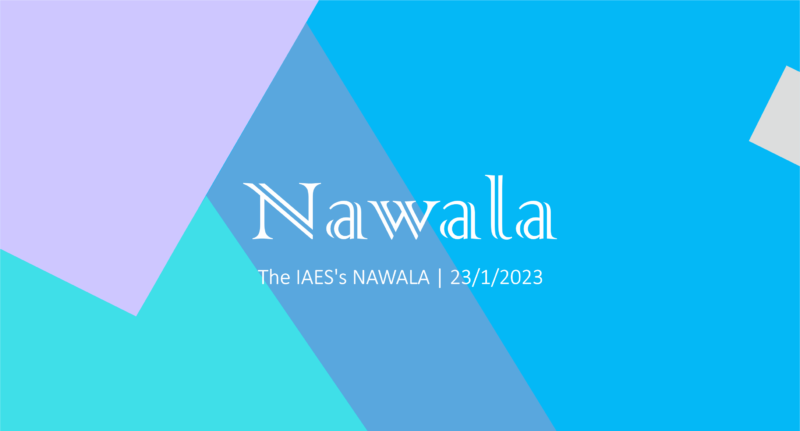Greetings, fellow Nawala! Hope you are always in good health.
This is the IAES Newsletter of the Institute of Advanced Engineering and Science. Today we want to share the theme of food technology or food technology. Food is a primary need for humans to survive. Material problems will be a severe problem that needs to be considered carefully. Therefore, today a lot of research on food technology. Among them is a discussion on agricultural technology written by Kavita Jhajharia and Pratistha Mathur in 2022.
A comprehensive review on machine learning in agriculture domain
Kavita Jhajharia, Pratistha Mathur
Agriculture is an essential part of sustaining human life. Population growth, climate change, resource competition are the key issues that increase food security and to handle such complex problems in agriculture production, intelligent or smart farming extends the incorporation of technology into traditional agriculture notion. Machine learning is a vitally used technology in agriculture to protect food security and sustainability. Crop yield production, water preservation, soil health and plant diseases can be addressed by machine learning. This paper has presented a compendious review of research papers that deployed machine learning in the agriculture domain. The observed sub-categories of the agriculture domain are crop yield prediction, soil management, pest management, weed management, and crop disease. The outcomes represent that machine learning provides better accuracy concerning classification or regression. Machine learning emerged with the internet of things, drones, robots, automated machinery, and satellite imagery motivates researchers for smart farming and food security.
Advances in food technology make it easier for farmers or agricultural actors to prepare food. Daneshwari Ashok Noola and Dayanand Rangapura Basavaraju conducted an image-processing study to identify and classify diseases on corn leaves. More details can be read on:
Daneshwari Ashok Noola, Dayanand Rangapura Basavaraju
Corn leaf disease possesses a huge impact on the food industry and corn crop yield as corn is one of the essential and basic nutrition of human life especially to vegetarians and vegans. Hence it is obvious that the quality of corn has to be ideal, however, to achieve that it has to be protected from the several diseases. Thus, there is a high demand for an automated method, which can detect the disease in early-stage and take necessary steps. However, early disease detection possesses a huge challenge, and it is highly critical. Thus, in this research work, we focus on designing and developing enhanced-K nearest neighbour (EKNN) model by adopting the basic K nearest neighbour (KNN) model. EKNN helps in distinguishing the different class disease. Further fine and coarse features with high quality are generated to obtain the discriminative, boundary, pattern and structural related information and this information are used for classification procedure. Classification process provides the gradient-based features of high quality. Moreover, the proposed model is evaluated considering the Plant-Village dataset; also, a comparative analysis is carried out with different traditional classification model with different metrics.
An irrigation system is the main thing in agriculture. The content of water and the volume of water can determine agricultural output, so the need for irrigation systems that are good and easy to use. Tayo Dorcas Obasanya et al. conducted a study to monitor irrigation systems. Using sensors installed on the internet of things (IoT) technology, the contents in water can be detected and monitored.
An internet of things-based irrigation and tank monitoring system
Tayo Dorcas Obasanya, Ilesanmi Banjo Oluwafemi, Oluwaseyi Olawale Bello, Taiwo Abdulazeez Lawal
Agriculture plays a significant role in the development of a nation and provides the main source of food production, income, and employment to nations. It was the most practiced occupation in Nigeria and this formed the backbone of the economy in the early 1960s before the discovery of crude oil, which has led to the derail of sufficient food production, exportation, and the agricultural economy at large. Over time, the dry season has always been challenging with little or no rainfall and there are no irrigation facilities that incorporate different saving practices to adapt to these climate changes on their own. In this paper, a cost-effective internet of things irrigation system that is capable of reducing water wastage, manual labor, monitoring tank water level and that can be controlled remotely is designed. The system integrated Arduino UNO with a soil moisture sensor, HCSR04 ultrasonic sensor, and ESP8266 Wi-Fi module that gives the system capable of being controlled remotely via the internet, thus achieving optimal irrigation using the internet of things (IoT). Some of the challenges facing the existing irrigation system are water wastage, poor performance, and high cost of implementation. The design system helps to control water supply to crops when it is needed, and also monitors soil moisture, temperature, and water tank level. After carrying out the experiments for 15 days, the system saved approximately 49% of the water used in traditional irrigation method. The system is useful in large farming areas to minimize human effort and reduce the cost of hiring personnel.
Other articles can be accessed FREE via https://ipmugo.com/, http://ijai.iaescore.com, http://ijece.iaescore.com, and http://ijict.iaescore.com.
By: Busthomi

